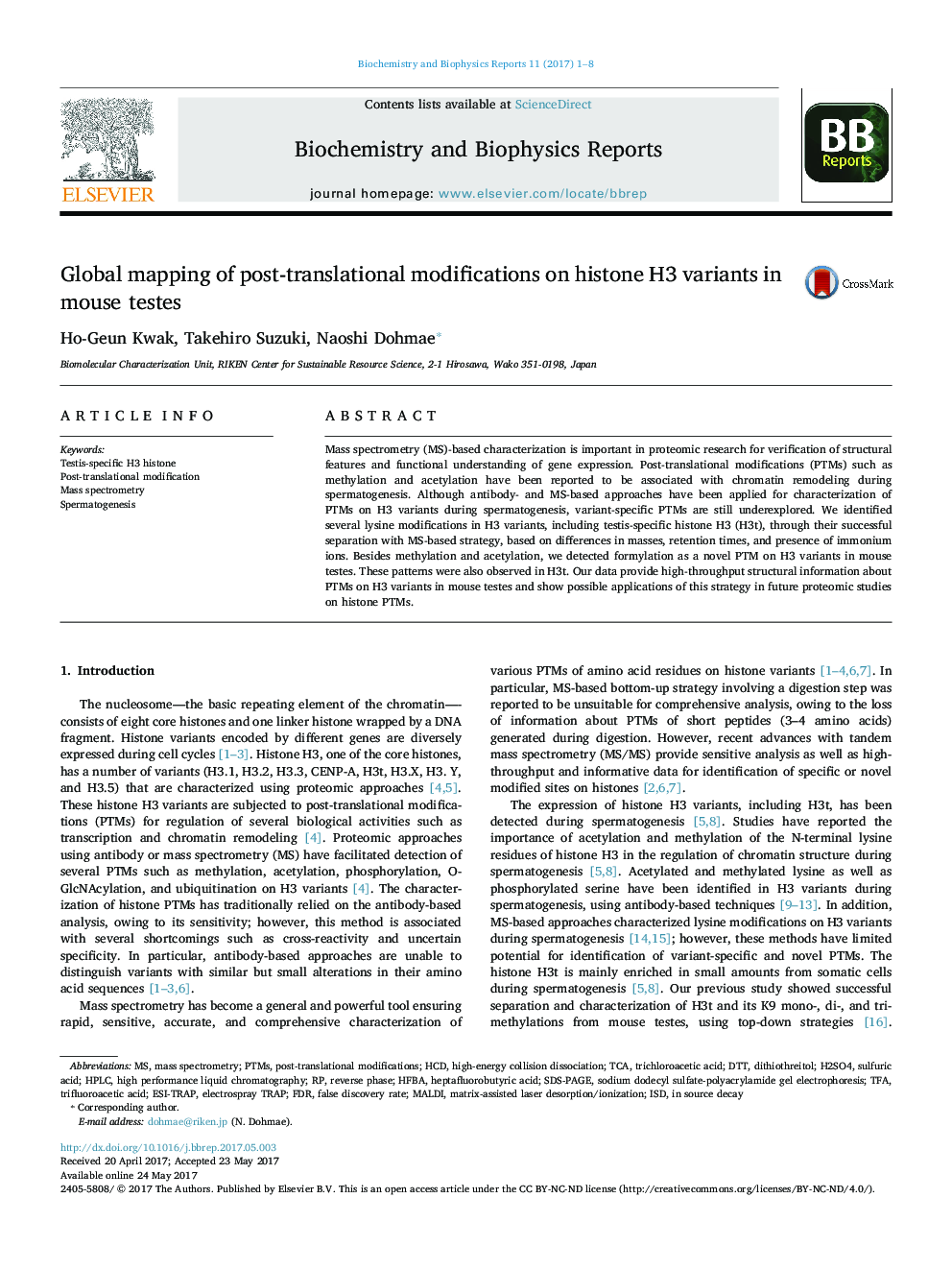| Article ID | Journal | Published Year | Pages | File Type |
|---|---|---|---|---|
| 5507041 | Biochemistry and Biophysics Reports | 2017 | 8 Pages |
â¢Various post-translational modifications in histone H3 variants were characterized in the mouse testes.â¢We specifically identified similar modified patterns based on immonium ions.â¢Novel modified lysines in testis-specific H3 histone, H3t, were verified.â¢Our approach will be helpful for the discovery of other novel or specific modifications during spermatogenesis.
Mass spectrometry (MS)-based characterization is important in proteomic research for verification of structural features and functional understanding of gene expression. Post-translational modifications (PTMs) such as methylation and acetylation have been reported to be associated with chromatin remodeling during spermatogenesis. Although antibody- and MS-based approaches have been applied for characterization of PTMs on H3 variants during spermatogenesis, variant-specific PTMs are still underexplored. We identified several lysine modifications in H3 variants, including testis-specific histone H3 (H3t), through their successful separation with MS-based strategy, based on differences in masses, retention times, and presence of immonium ions. Besides methylation and acetylation, we detected formylation as a novel PTM on H3 variants in mouse testes. These patterns were also observed in H3t. Our data provide high-throughput structural information about PTMs on H3 variants in mouse testes and show possible applications of this strategy in future proteomic studies on histone PTMs.
Graphical abstractDownload high-res image (177KB)Download full-size image
